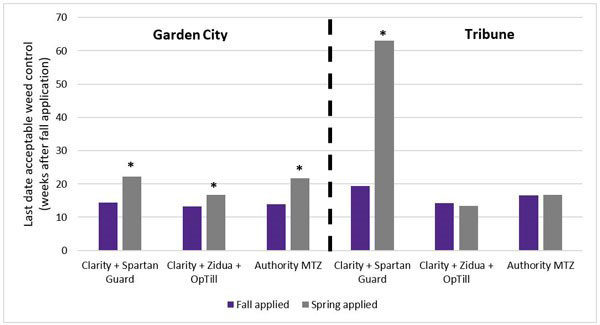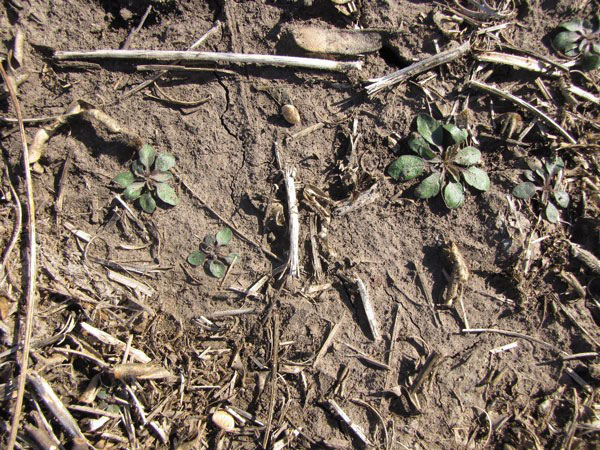With row crop harvest well underway, it is time to start planning fall herbicide applications. Herbicide applications in late October through November can improve control of difficult winter annual weeds. Fall weed control is associated with warmer soils and easier planting in the spring. However, it is important to remember that fall-applied herbicides may limit your crop options in the spring. Also, remember that herbicides should not be applied to frozen ground.
Some of the key herbicides to consider for fall herbicide applications include chlorimuron (Classic, others), flumioxazin (Valor, others), suflentrazone (Spartan, others), and Autumn Super for residual activity. Even though these herbicides provide activity, additional spring application of pre-emergence herbicides will be needed to extend the duration of residual weed control. One thing to remember about residual activity from fall herbicide applications is that weather conditions will influence the length of residual control and weed emergence patterns. Warm, wet winters are associated with shorter periods of weed control, while cool, dry winters are likely to allow for longer periods of weed control.
For burndown activity, glyphosate, 2,4-D, or dicamba are good options to consider. Alternatives for grass control include Group 1 herbicides like clethodim (Select, others) or quizalofop (Assure II, others). Alternatives for controlling broadleaf weeds include paraquat (Gramoxone, others) tiafenacil (Reviton), or saflufenacil (Sharpen).
Some key weeds to target with fall herbicide applications are marestail, henbit, dandelion, prickly lettuce, pepperweed, field pansy, evening primrose, mustard species, and recently-emerged cool-season grasses. When higher rates of herbicides are used, some suppression of early spring-germinating summer annual broadleaf weeds such as kochia, common lambsquarters, wild buckwheat, and Pennsylvania smartweed can be achieved. Recent data comparing kochia control with fall and spring applications are included in Figure 1.

Figure 1. Estimated weeks of kochia control greater than 80% following fall (early December 2014) and spring (early February 2015) herbicide applications at Garden City and Tribune, KS. An asterisk (*) indicates that the spring application provided acceptable weed control at a later date than a fall application. Data from Kumar et al.,2019.
Marestail is a problem that merits special attention. It is much easier to control in fall or early spring while still in the rosette growth stage (Figure 2). A companion article in this eUpdate issue provides additional information about controlling marestail.

Figure 2. Marestail rosettes in a recently harvested soybean field. Photo from Dallas Peterson.
The use of trade names is for clarity to readers and does not imply endorsement of a particular product, nor does exclusion imply non-approval. Always consult the herbicide label for the most current use requirements.
For more information on controlling bindweed, see 2024 Chemical Weed Control for Field Crops, Pastures, Rangeland, and Noncropland, K-State publication SRP-1183.
Sarah Lancaster, Extension Weed Science Specialist
slancaster@ksu.edu
Jeremie Kouame, Weed Scientist, Agricultural Research Center – Hays
jkouame@ksu.edu
Patrick Geier, Weed Scientist – Garden City
pgeier@ksu.edu
Tags: weed control herbicides annual weeds fall-applied herbicides